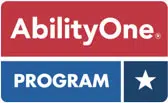Door to Cybersecurity Jobs Opens for Person with Cauda Equina Syndrome
The road to a cybersecurity job was not a smooth one for Robert Coats.
“I wasn’t expecting special treatment. I just wanted a chance to prove myself and show that I am like everyone else. I was just in an unfortunate accident.”
In September of 2016, Robert’s life changed in an instant. While riding his motorcycle, he was struck by another vehicle.
“I was leaving work when a car turned left into me and ran over the whole right side of my body,” Robert said.
“I suffered wrist, foot, and rib fractures. I had two collapsed lungs and a cut in my liver. My lower L5 disk was cracked and later ruptured.”
Complications from Robert’s injuries led to a chronic condition known as Cauda Equina Syndrome. This condition causes significant mobility and health challenges due to the compression of nerves at the end of the spinal cord. However, despite the physical hurdles, he was determined to rebuild his life so that he could provide for his children.
Not an Easy Road to Cybersecurity Jobs
The road to finding stable employment was a difficult one. Robert knew that returning to his previous job as a vending machine supplier would not be possible as it was physically demanding. He quickly found that his disability and unemployment benefits were insufficient to cover both his medical treatment and the basic needs of his family. The financial strain was immense, but he refused to give up.
“My kids meant way more to me than just sitting around. I knew I had to find work.”
Robert began applying for entry-level positions that would allow him to work from home. He focused his job search on companies that promoted hiring people with disabilities, hoping that these organizations might offer him a better chance of securing an interview.
“I kept getting the feeling that they were just saying they hire people with disabilities. I felt like they didn’t really mean it in their hearts, and it was just a way to make them look good.”
But despite his efforts, he struggled to find meaningful work. Robert decided he needed to make himself a more competitive candidate.
“I studied for the CompTIA Plus and Security+ certifications because I wanted to get into cybersecurity,” he said. “I had years of experience working with computers, and I’d heard it was a good career path.” After passing both certification exams, he continued applying for remote cybersecurity jobs, advertised towards people with disabilities, with no success.
Making Employment Possible
Just when he was beginning to lose hope, Robert found an opportunity to connect with an employer who truly believed in his potential.
His case worker at the Department of Rehabilitation suggested that he attend a cybersecurity event for people with disabilities. At first, he was hesitant.
“I wasn’t going to go at first,” Robert admitted. “I was tired of all of this. I’d been putting in resumes everywhere, and I felt like my disability didn’t help.”
But he refused to give up. “My kids just popped into my head, and I thought, I have to go for them,” he said. “So, I went. And I made a big scene while they were asking questions.”
At the event, Robert shared his job-hunting frustrations. “I got up and said, ‘You guys say it’s easy to get cybersecurity jobs, and that couldn’t be further from the truth for me.’ I felt like I had to say something about my experience.”
His words were heard by the right person. Alan McMillan, Chief Information Officer of PRIDE Industries, approached him after his comments, and this meeting marked a turning point.
Soon after, Robert landed a paid internship with PRIDE Industries that allowed him to utilize his skills, work ethic, and dedication. The internship gave Robert 250 hours of on-the-job training, enabling him to learn the ins and outs of cybersecurity jobs and setting him on a path to employment. More importantly, this new job gave Robert the confidence and support he needed to succeed.
A New Chapter: Looking Ahead at a Career in Cybersecurity
Today, Robert continues to pursue his passion for cybersecurity with the help and guidance of PRIDE Industries. The challenges he faced on his road to employment have only strengthened his resolve, and with his new career on the horizon, Robert is proof that with determination and the right support, meaningful employment is possible.
He now has a permanent position in PRIDE Industries’ IT department as an Associate Security Engineer, and has a goal of advancing his career, specifically in cybersecurity jobs that allow him to further hone his skills and contribute to the field.
“I feel strongly about PRIDE Industries giving me a chance and I am determined to give my best. I’m going to try and stay here and work as long as I possibly can.”

